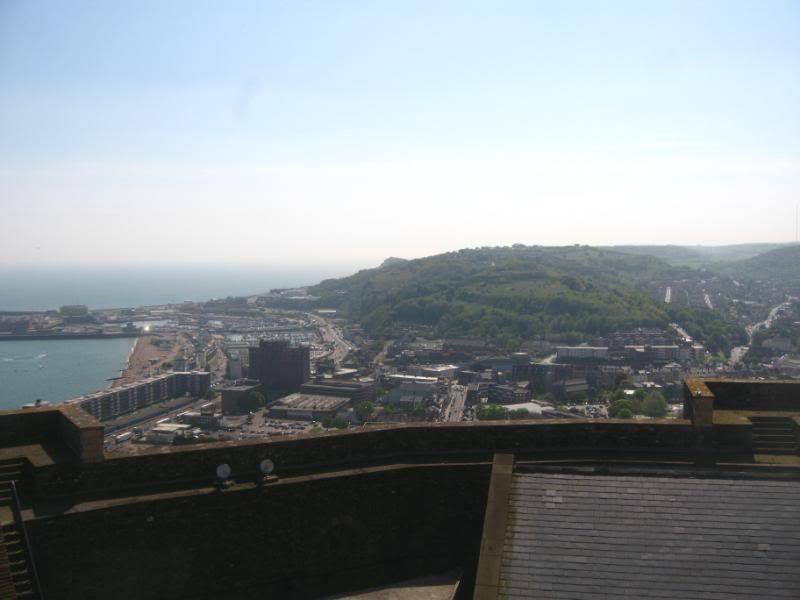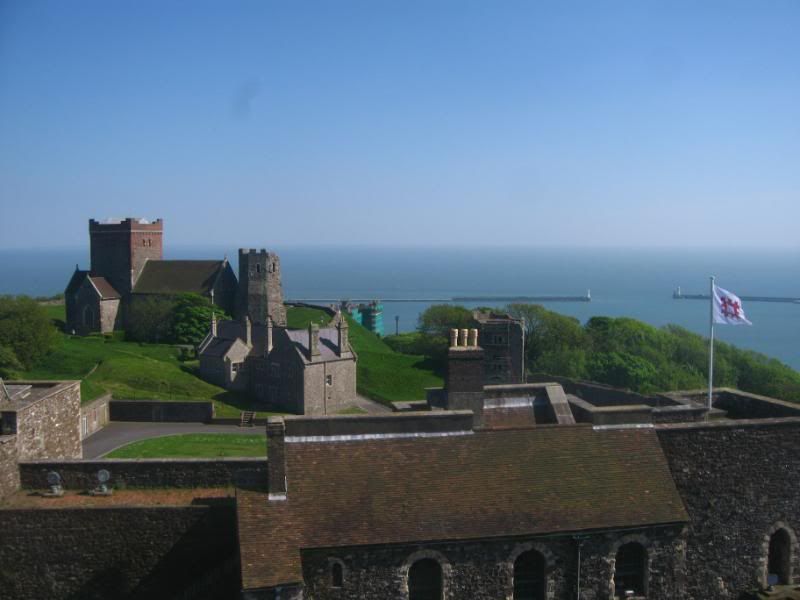A brief history (if you can anything I lecture about brief)
The original structure on this site was a an Iron Age fort. The only evidence of this fort was the earth embankment that surrounds the site and is now part of the defenses. The fort was long gone by the time the Romans arrived and built a watchtower on it, which still stands inside the castle grounds. There was a matching watchtower on the other cliff on the opposite side of Dover, but that one is gone. Later the Saxons built a church, St Mary de Castro, next to the Roman watchtower, which by now had lost the top 4 floors of its structure. In the 12th century, the keep and the internal curtain walls were built under orders of Henry II, using the original earth embankment to form part of the moat. After a French siege in the early 13th century, modifications were made to improve the defenses with towers added and gates modified. During the late 18th to early 19th century, massive modifications were made to the castle and the surrounding area because of fear of invasion by Napoleon. These modifications were made of changes to the walls to accommodate artillery and musketeers as well large numbers of fighting positions also accommodating cannon as well as a new fortified position where the other Roman watchtower stood, called the Western Heights.
The castle again saw service during WW2 where it was the headquarters for the evacuation of British troops after the Nazi army invaded France then it was used as the command centre coordinating the navy for the D-Day landings. In the 1960s it was the regional seat of government in case London was obliterated in a nuclear war with the Soviet Union.
Obviously I've skipped over a large amount there, but this gives an idea on how much this place has seen.
This place is so large it's hard to do it justice with pictures.
They didn't let us take pics of the secret wartime tunnels though.

This the view of Dover city from the top of the keep. In the distance you can see the hill where Western Heights was built. If you know what you're looking for you can still see the earth embankments that were used as the defensive wall of the fort. Now it is mostly overgrown bush.

This is the south east view of the castle. On the horizon is France. On the far left of the image in the background is the old Saxon church and on the right of the church is the Roman watchtower.

This the view of Dover city from the top of the keep. In the distance you can see the hill where Western Heights was built. If you know what you're looking for you can still see the earth embankments that were used as the defensive wall of the fort. Now it is mostly overgrown bush.

This is the south east view of the castle. On the horizon is France. On the far left of the image in the background is the old Saxon church and on the right of the church is the Roman watchtower.
I won't belabor this too much cos there are links to my photos on the main page. But this gives you a bit of an idea on how important this place was.
There were some underground tunnels leading to one of the moat defences and I went own there and it completely spooked me out even though it was broad daylight. No idea why. It was one of those cramped tunnels that the brits were so fond of back then. Lights had been installed but one of them was flickering and then a pigeon flew out. It was the setting for any shock flick. *shudder*.
That said, Dover itself kinda reminds me of Gosford. Lots of single parents roaming around. It's also the gateway by sea to France as the Calais to Dover Ferry puts in here, so there were a fair number of French roaming around. On the whole it's not a bad place, fairly quiet.
One particularly funny thing I saw was a sign leading out of a driveway. It said "To avoid damage, drive dead slow". This was from a drive way leading out into an alleyway. I can only imagine at the carnage that coming out into a little used alley must have caused such that a "drive dead slow" warning had to be issued....
2 comments:
cliff of dover
awesome song
damn
lol idiot :P
hey that's cool abotu the sign ...but.. DID YOU TAKE A PICTURE OF THE SIGN?!?!?!?!
i'm always on the look out for "engrish" type things here and i got a couple..... but my camera's broken so :(
Post a Comment